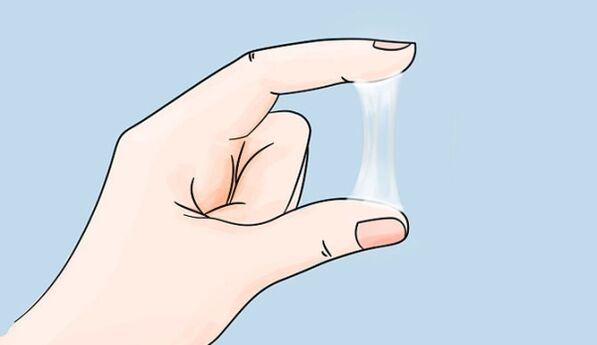Male and female genital discharge is common, but can sometimes be a disease. Often, abnormal secretions become a precursor to sexually transmitted infections.
The release of men in an aroused state is called an ejaculate. It is separated by Cooper's ureters. Littre’s glands are additional sites for precum formation. A mucous fluid is excreted. Their number varies and depends on the characteristics of the body or the duration of abstinence. This secretion contains sperm, which can fertilize the egg.
The bulbourethral glands secrete a secretion that moisturizes the urethra, maintains an alkaline environment, and provides a favorable environment for sperm to pass through the urethra.
The ejaculate is also excreted during masturbation, anticipating penetration, in the early stages of intercourse.
The function of this secretion is to neutralize the acidic environment in the urethra caused by urine. There is also an acidic environment in the vagina, due to the entry of the ejaculate, the environment changes to alkaline, which contributes to the survival of the sperm. Another function is the role of lubrication in intimacy.

Men’s discharge in an aroused state is a natural physiological reaction of the body.
Smegma is a physiological secretion from the glands located on the head of the penis. Their number is small. They are removed under hygienic conditions and do not cause any inconvenience. In the absence of hygiene or non-compliance, smegma accumulates under the foreskin and can lead to inflammatory diseases such as balanoposthitis.
Sperm is secreted during ejaculation and contains sex secret and sperm.
Ejaculation is involuntary ejaculation, usually during sleep, that occurs during puberty or in men who stay for a long time.
If you notice that the amount and nature of this secretion has changed, you should see a doctor. Pathological discharge in men can be cloudy, gray, yellow, thick, cheesy. Their appearance is accompanied by a burning sensation, pain, and discomfort in the urethra.
Normal indicators of male discharge
During excitement, the amount of secretion in men is individual. If someone is watching their health, they know their norm.

They are normally transparent, free of pungent odors, rather thick and sticky.
Physiologically, the amount of secretion increases with prolonged abstinence from intimacy. In this case, they become thicker and more turbid in color. Allocation ratios:
- watery and transparent;
- the odor is not expressed;
- medium density.
Food, stress, chronic illness, bad habits can affect the change in secretions.
Intimate hygiene rules for men:
- Use neutral acid soap.
- Wash the genitals twice a day.
- Rinse the flash by pulling on the foreskin.
- Avoid overheating the testicles.
- The bedding should be wide and made of natural fabric.
Women's discharge
In women, secretions during arousal are commonly referred to as lubrication. It shows a clear, odorless liquid. The fluid is separated by the epithelial glands of the vagina. This includes leukocyte cells and microorganisms that are representative of the normal microflora of the vagina.
Vaginal secretions are also excreted normally, up to 5 ml per day. During arousal, the amount increases due to the blood supply to the gonads. Depending on the physiological characteristics of the body, some girls do more, others less.

Excretion during arousal is a completely normal physiological phenomenon in women.
Thanks to the presence of lubrication, comfortable penetration of the penis into the vagina is ensured. During ovulation, the composition of vaginal secretions changes to ensure conception.
In addition, the composition of vaginal secretions changes throughout the menstrual cycle. They are transparent and watery at the beginning of the cycle. Their job at this stage is to protect the mucous membrane from infection. The closer you ovulate, the thicker they become, the smell of egg white. After ovulation, the amount of secretion decreases and the girls experience dryness in the days before menstruation.
Normal indicators of vaginal discharge
Female discharge rate:
- liquid, transparent;
- jelly-like during ovulation;
- a small amount that increases closer to ovulation and then decreases;
- faint odor without unpleasant shade;
- do not irritate the vaginal mucosa or the skin of the external genitalia;
- not accompanied by subjective feelings.
During intercourse, the amount of mucous secretions from the vagina increases - a sign of excitement.
Ejaculation occurs in women during their peak orgasms. It does not contain germ cells like male ejaculation. It separates from glandular tissue near the urethra. Unlike men, the disclosure of such a secret can occur multiple times during a sexual intercourse. The amount of this is much higher than that of men. The abundance of ejaculation indicates that the woman is getting maximum pleasure.
Hygiene rules for normalizing vaginal discharge:
- For special intimate hygiene, use special soap. The formulation should contain lactic acid to maintain the acid-base environment in the vagina.
- In the case of large amounts of discharge, daily sanitary napkins are used, which are changed regularly.
- Wear a canvas made of natural fabric.
- We recommend washing yourself twice a day.







































